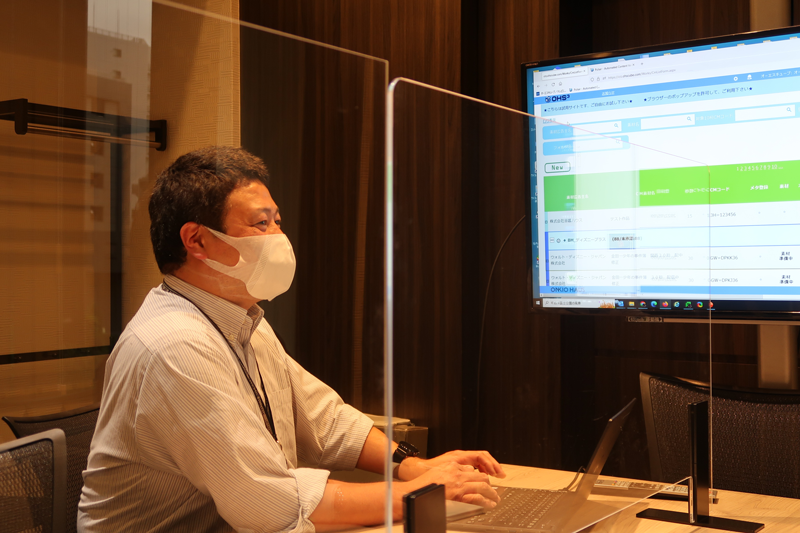ONKIO HAUS Co. Ltd. (https://www.onkio.co.jp/) is a comprehensive recording studio in Japan, offering a wide range of services from recording, mixing, mastering, video editing, and audio post-production. It launched a TV Commercial online delivery service called “OHS³” = Onkio Haus Smart Send Service (OHS Cube) in 2017 and is using “Pulsar Professional” file based Automated QC software by Venera Technologies as part of this service for QC of video and audio files.
We interviewed Mr. Futatsugi, the general manager of the OHS Cube Business Division, who is in charge of this service.
1. There are multiple options for QC products, but why did you choose Pulsar as the QC for your delivery service?
Mr. Futatsugi: The main reason is that Pulsar was equipped with HardingFPA from Cambridge Research Systems, which is a PSE checker as an option. PSE check is absolutely essential when broadcasting on Japanese terrestrial broadcasting stations. Also, in addition to bringing in materials, there are many files that are submitted to our company for post-process requests, and it was attractive to be able to perform QC processing on multiple files at the same time.

2. What features of Pulsar do you use other than the Harding option?
Mr. Futatsugi: We check to see if the materials for TV commercials are produced according to the standards. The main QC items are MXF files, metadata, and track layouts.
Immediately after the MXF material is uploaded, Sony checker runs automatically on the content. If the content passes the Sony checker, CM material is thrown into the watch folder and Pulsar starts running automatically.
QC is performed using a template that conforms to SMPTE RDD 9:2013 provided by the manufacturer, and we confirm that the file is created according to the format.
3. Do you get errors or warnings on your content even though MXF is a common format?
Mr. Futatsugi: You may get different results depending on the editing software and the version you exported. At our company, we don’t tell people “Please recreate it because it’s NG.” when Pulsar reports errors or warnings in commercials. Since all 134 stations nationwide do not make OK/NG judgments under the same conditions, Pulsar is provided as a tool that can be used arbitrarily by users who have uploaded the materials. We ask to consider the results as a second opinion.
4. So, you’re saying that just because the Pulsar result is NG, it’s not completely NG as a commercial material?
Mr. Futatsugi: Yes. Pulsar is used as a supplementary inspection tool, and we also check the monitor and waveform monitor with the conventional SDI output. However, even though it’s a supplementary tool, the burden on workers is completely different with and without Pulsar. When I was working in the field myself, I didn’t trust QC with the machine, but now I leave the items that are easy to check to Pulsar, and let the on-site staff focus on items that can only be judged by humans.

5. Can you tell us about the track layout feature?
Mr. Futatsugi: By using this function and setting up a specific framework, you can check the subframe unit on the Pulsar screen. So, depending on the project, you don’t have to have audio editing staff stay late at night for non-modulation checks. Also, you can check by TC (absolute location) specification or relative specification by Absolute, Duration, and thus use it properly according to the purpose.
Track layout function (Track Layout) It is possible to check whether the layout structure conforms to the provisional standards for bringing infile-based media commercials.

6. Are there any new features or improvements you would like to see for Pulsar in future?
Mr. Futatsugi: Subliminal detection is one of the revision requests from the station. This is an important point compared to PSE check. Even if it is unintentional, we may receive a request for revision if the content is mixed in units of fields and frames. We would like to improve it so that it can be detected by using Flash Frames and Scan Mode implemented in Pulsar. Other than that, it would be nice to be able to check the superimposition of CM subtitle data. If there is a case where there are no subtitles in the credits and meta information, but commercial subtitles are superimposed on the actual main video, there is a possibility that we will receive a request for revision. The opposite is also true. I think it would be a great advantage if it would be possible to check in advance whether the meta information and the content of the main video match.
We would like to express our sincere gratitude to Mr. Futatsugi for his enthusiastic feedbacks about checking video and audio files, mainly commercials, despite his busy schedule.






